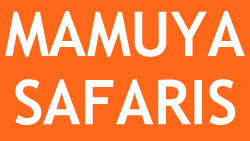The Massai are a Nilotic ethnic group of semi-nomadic people located in Kenya and northern Tanzania. Due to their distinctive customs and dress and residence near the many game parks of East Africa, they are among the most well known of African ethnic groups. They speak Maa, a member of the Nilo-Saharan language, but they also educated in the official languages of Kenya and Tanzania: Swahili and English. The Massai population is estimated between 500.000 and 1 million. Estimates of the respective Massai populations in both countries are complicated by the remote locations of many villages, and their semi-nomadic nature.
According to their own oral history, the Massai originated from the lower Nile valley north of Lake Turkana (North-West Kenya) and began migrating south around the fifteenth century, arriving in a long trunk of land stretching from northern Kenya to central Tanzania between the seventeenth and late eighteenth century. Other ethnic groups were forcibly displaced as they settled there. The Massai territory reached its largest size in the mid-nineteenth century, and covered almost all of the Great Rift Valley and adjacent lands from Mount Marsabit in the north to Dodoma in the south. At this time the Maasai, as well as the larger group they were part of, raided cattle as far east as the Tanga coast in Tanzania. Raiders used spears and shields, but were most feared for throwing clubs which could be accurately thrown from up to 100 meters.
Because of this migration, the Massai are the southernmost Nilotic speakers. The period of expansion was followed by the Massai “Emutai” of 1883-1902. This period was marked by epidemics of contagious bovine pleuropneumonia, rinderpest, and smallpox. The estimate first put forward by a German lieutenant in what was then northwest Tanganyika, was that 90% of cattle and half of wild animals perished from Rinderpest. German doctors in the same area claimed that “every second” African had a pock-marked face as the result of smallpox. This period coincided with drought. Rains failed completely in 1897 and 1898.
Starting with a 1904 treaty, and followed by another in 1911, Massai lands were reduced by 60% when the British evicted them to make room for settler ranches. Massai in Tanzania were displaced from the fertile lands between Mount Meru and Mount Kilimanjaro, and most of the fertile highlands near Ngorongoro in the 1940s. More land was taken to create wildlife reserves and national parks: Amboseli, Samburu, in Kenya, Manyara, Ngorongoro, Tarangire and Serengeti in Tanzania.
Massai are pastoralist and have resisted the urging of the Tanzanian and Kenyan governments to adopt a more sedentary lifestyle. They have demanded grazing rights to many of the national parks in both countries.
The Massai stood against slavery and lived alongside most wild animals with an aversion to eating game and birds. Massai land now has East Africa’s finest game areas. Massai society never condoned traffic of human beings, and outsiders looking for people to enslave avoided the Massai. Essentially there are twelve geographic sectors of the tribe, each one having its own customs, appearance, leadership and dialects.
Massai society is strongly patriarchal in nature with elder men, sometimes joined by retired elders, deciding most major matters for each Massai group. A full body of oral law covers many aspects of behaviour. Formal execution is unknown, and normally payment in cattle will settle matters. An out of court process called ‘amitu’, ‘to make peace’, or ‘arop’, which involves a substantial apology, is also practiced. The Massai are monotheistic, and they call God Engai. Engai is a single deity with a dual nature. The “Mountain of God”, Oldonyo Lengai, is located in northernmost Tanzania. The central human figure in the Massai religious system is the laibon who may be involved in: shamanistic healing, divination and prophecy, ensuring success in war or adequate rainfall. Whatever power an individual laibon had was a function of personality rather than position. Many Massai have become Christian, and to a lesser extent, Muslim. The Massai are known for their intricate jewelry.
A high infant mortality rate among the Massai has led to babies not truly being recognized until they reach an age of 3 moons. For Massai living a traditional life, the end of life is virtually without ceremony, and the dead are left out for scavengers. A corpse rejected by scavengers (mainly spotted hyenas, which are known as Ondilili or Oln’gojine in the Massai language) is seen as having something wrong with it, and liable to cause social disgrace, therefore it is not uncommon for bodies to be covered in fat and blood from a slaughtered ox. Burial has in the past been reserved for great chiefs, since it is believed to be harmful to the soil.
Traditional Massai lifestyle centers around their cattle which constitute their primary source of food. The measure of a man’s wealth is in terms of cattle and children. A herd of 50 cattle is respectable, and the more children the better. A man who has plenty of one but not the other is considered to be poor. A Massai myth relates that God gave them all the cattle on earth, leading to the belief that rustling cattle from other tribes is a matter of taking back what is rightfully theirs, a practice that has become much less common.

